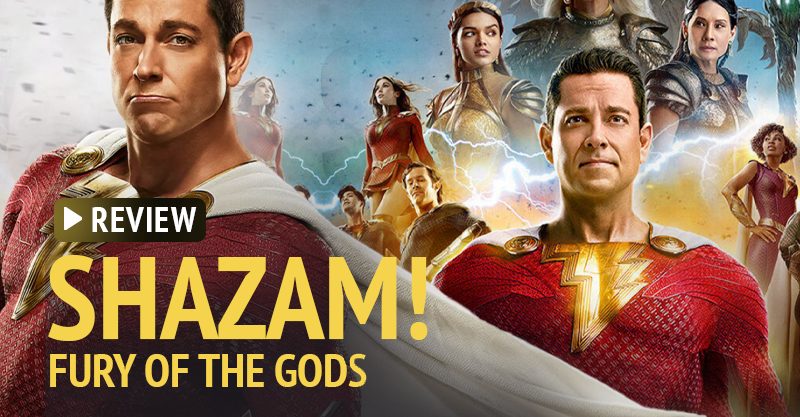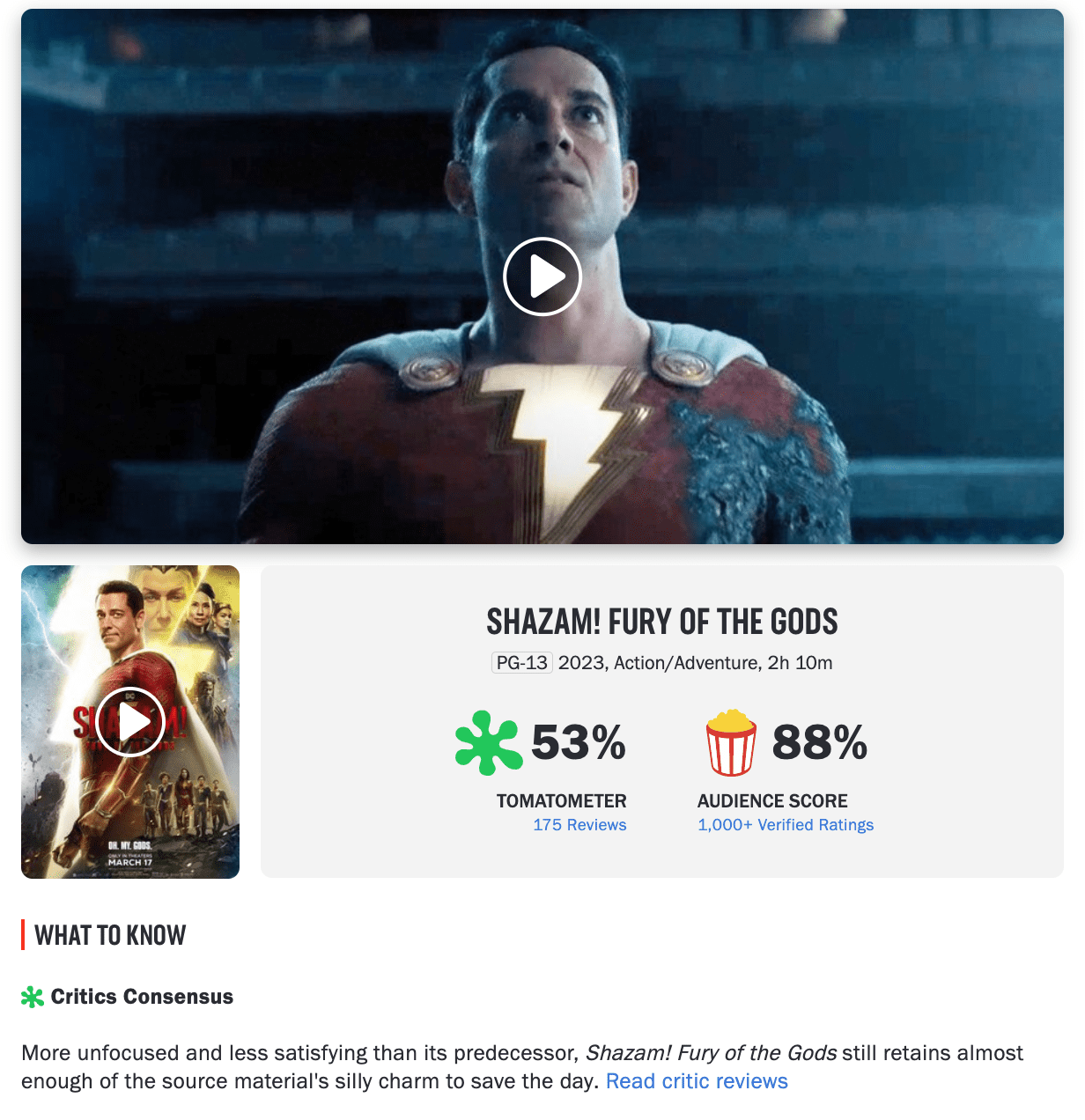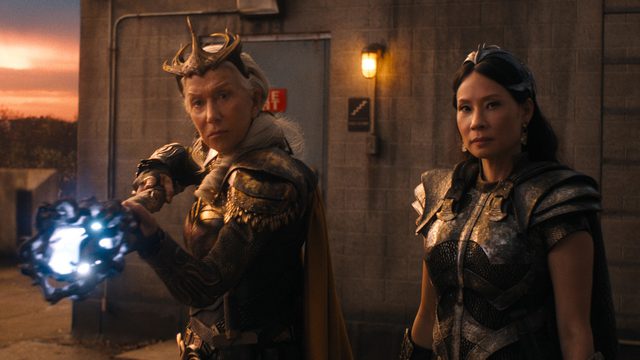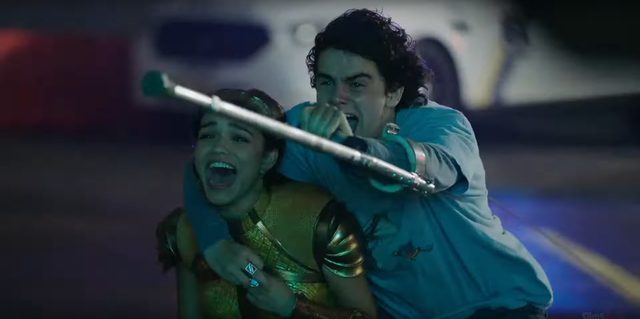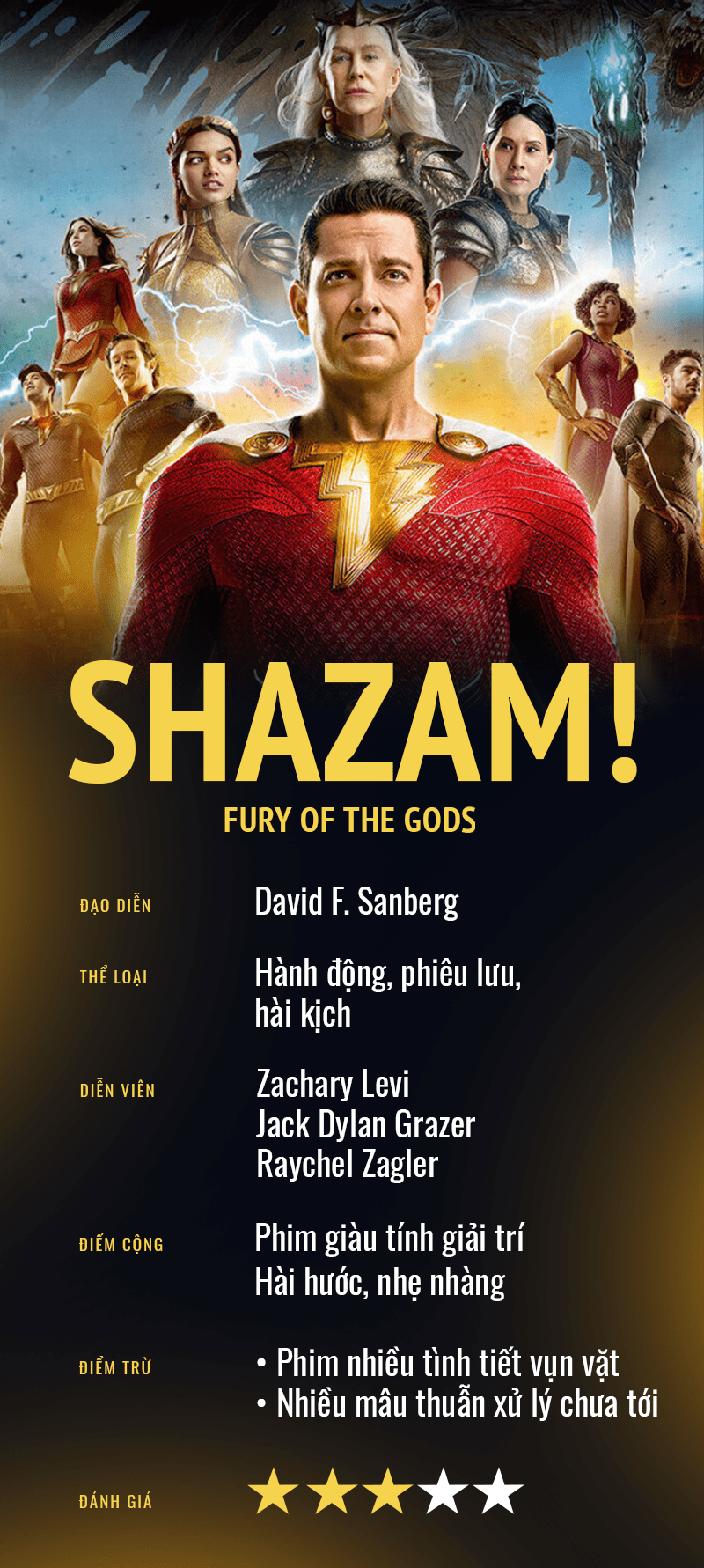In 2019, Shazam! directed by David F. Sandberg was released, showcasing a broader DC Extended Universe (DCEU) that could present a superhero film in a light-hearted, family-friendly, and humorous manner. Released in April 2019, the film grossed $366 million worldwide against a production budget of approximately $100 million (according to IMDb).
The profit margin that Shazam! brought in was modest compared to Aquaman (2018), which had debuted the previous year, yet it garnered 90% positive feedback from critics and 82% from audiences on Rotten Tomatoes, a feat that the film featuring Jason Momoa in the lead role could not achieve. And recently, with a promising future centered around a showdown between Shazam (Zachary Levi) and Black Adam (Dwayne Johnson) on screen, Warner Bros. has green-lit a sequel.
In Shazam! Fury of the Gods, Billy Batson (Asher Angel) – the young hero who transforms into the adult superhero Shazam – is grappling with feelings of separation from his foster siblings. This emotional turmoil directly affects the superhero team that Shazam leads. After several years of heroic adventures, they have become known as “The Philadelphia Fiascos,” but they still have a lot to learn.
Batson’s struggles in facing off against Dr. Sivana (Mark Strong) from the previous film have caused some serious implications. The trio of daughters of Atlas — Hespera (Helen Mirren), Kalypso (Lucy Liu), and Anthea (Rachel Zegler) — infiltrates the mortal realm seeking a powerful artifact that could help them reclaim their former glory. The battle between the “Philadelphia Fiascos” and the three goddesses has led to catastrophic consequences for the citizens of their city.
The Next Disappointment for DC Films and Warner Bros.
The project Shazam! Fury of the Gods was announced by Warner Bros. with considerable anticipation. However, due to the impacts of the COVID-19 pandemic and the ongoing critique of the DC superhero film franchise, the film faced significant delays prior to its release in March this year, occurring more than a month later than its intended release date.
After its opening weekend, Fury of the Gods earned $65.5 million globally. This figure significantly dropped compared to the initial $102 million that the first film earned upon its release in 2019. Not only did it see a decrease in box office revenue, but the critical reception was also considerably dimmer. On Rotten Tomatoes, only 53% of critics gave Shazam! Fury of the Gods positive reviews. The only silver lining for the Shazam! brand is its consistent 83% positive feedback from audiences.
Critics noted that Shazam! Fury of the Gods felt meandering, less engaging than the first film, yet still managed to charm audiences.
However, the overall performance of Shazam! Fury of the Gods at the box office last weekend indicates a significant decline from expectations. Following its release in late 2022, the popularity of Dwayne “The Rock” Johnson also did not help Black Adam reach $400 million globally on a production budget of around $200 million. It garnered only about $143 million from global ticket sales (according to Deadline).
It is highly likely that Shazam! Fury of the Gods will be the next expensive superhero film failure for DC Films and Warner Bros. in its goal to earn revenue at the box office. Considering the future of superhero films, industry analyst Shawn Robbins from BoxOffice Pro shared: “This is a weak start, and it cannot be any different. Without a substantial marketing budget to get the word out (close to the core message and audience demand), it is very challenging for superhero films adapted from comic books to replicate the success of previous installments.”
Character Dynamics
Overall, in Shazam! Fury of the Gods, audiences will still find the distinctive elements that make the Shazam! brand unique, as well as the success of the previous film: a young superhero grappling with the duality of a teenage mind and the responsibilities of adulthood, all while navigating a family dynamic that is both chaotic and endearing.
In this sequel, Zachary Levi continues to embody the youthful essence of the superhero, reflecting the mindset and emotional depth of a 17-year-old who “just wants to fit in.” In contrast, Freddy Freeman, portrayed by 2003-born Jack Dylan Grazer, serves as the grounding force in this familial journey. Unfortunately, Asher Angel, who portrays Billy, appears less prominently, leading to a lack of development in the dynamic between Freddy and Billy.
Critics noted that Shazam! Fury of the Gods felt meandering, less engaging than the first film, yet still managed to charm audiences.
With Fury of the Gods, DC Films may be experimenting with the formula of their neighboring studio, Marvel Studios — bringing in top-tier stars into roles that… seem to be overshadowed in their own productions. The appearances of Helen Mirren, Lucy Liu, and Rachel Zegler as the three sisters Hespera, Kalypso, and Anthea contribute significantly to enriching the narrative and character depth. Hespera is portrayed as wise and resilient, Kalypso as rebellious and volatile, while the youngest sister, Anthea, is portrayed as compassionate amidst the tumultuous dynamics of her older sisters.
On screen, Mirren’s character Hespera “stands out” to audiences with witty remarks that cleverly differentiate Gen Z from boomers. As for Disney’s rising star Rachel Zegler, she and Dylan Grazer manage to create a compelling romantic subplot that, despite its awkwardness, reinforces the essence of a teenage love story.
Entertainment Value, but Not Necessarily Great
The straightforward and simplified plot, which intertwines elements of family drama with a quest narrative, has made Shazam! Fury of the Gods a notable feature for weekend entertainment. It touches upon several critical themes that audiences care about: the quest for identity amidst various realms, the struggles of failing superheroes, and the potential destruction of a city that endangers its inhabitants.
However, the film ultimately falls short in one crucial aspect: a lack of substance. When discussing substance, it is essential to consider the core idea that allows the audience to engage deeply. Shazam! Fury of the Gods remains within the safe realm that the first installment established, making it more appealing to a younger demographic than to adults who have grown up with franchises like The Batman (though not part of the DCEU) or the lavish Zack Snyder’s Justice League (2021), which still manages to resonate with… even The Suicide Squad. Nonetheless, what David F. Sandberg brings to the table is merely a nostalgic nod, much like The Goonies (1985) if the film were to be remade for a limited audience.
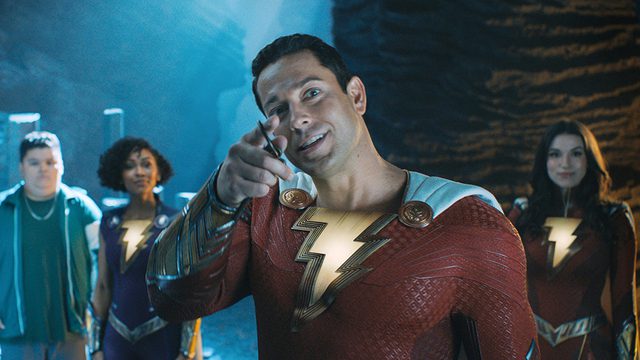
However, the storytelling approach in Shazam! Fury of the Gods can also lead audiences to lose focus due to frequently veering into lengthy exposition, which does not contribute constructively to the main narrative. For instance, the film frequently indulges in side adventures that take away from the central plot. The film heavily relies on various character interactions without establishing a coherent connection, leading to a sense of disjointedness that raises questions — do the characters need to be this disconnected?
“Deus ex machina,” or “god from the machine,” is a term often used to describe a plot device that resolves a conflict through an unexpected or improbable occurrence. In modern cinema, particularly in superhero films, this resolution method can undermine the tension by offering an escape route for the narrative’s conflict. Shazam! Fury of the Gods also employs this trope to escape its most significant pitfalls — most notably when it uses the term “divine intervention” to bring the Justice League into the story.
This detail reiterates the “pulling from the ether” aspect of Superman in Shazam!, while simultaneously serving as a clumsy reminder that “I have the power to bring in any Justice League member into the film.” Moreover, it effectively ties Shazam into the larger DCU landscape. However, above all, it serves as a “cheat” that undermines the stakes established moments prior to Shazam’s heroic return. This is a glaring inconsistency that is entirely out of place and ultimately undermines the film’s ability to present a “serious” tone that critics have pointed out.


